Bangladesh needs clear priorities for the future
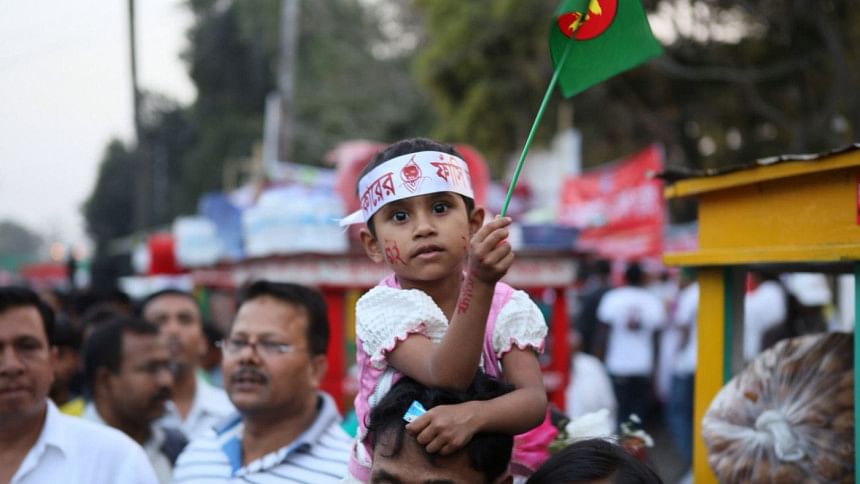

Bangladesh has big plans for the next five years. By the time the 50th anniversary of independence arrives, and as part of its Vision 2021 plan, the nation aspires to achieve middle-income status. Along with the economic aim, other ambitious goals include slashing poverty drastically, safeguarding basic rights for all citizens, ensuring ubiquitous access to adequate nutrition, clothing, housing, and health care - and doing it all while protecting the environment.
The country has made spectacular progress over recent years, halving poverty and growing the economy by about6 percent each year. But to make Vision 2021 a reality, Bangladesh will also have to ameliorate the problems that continue to frustrate her development efforts. To do that, stakeholders from the government to international donors to everyday citizens will have to have razor-sharp focus on the solutions that will help Bangladeshis prosper most, and at the least cost.
Great challenges remain for the country. A quarter of the population still lives in poverty. One-third of children under age five are underweight. Close to 40 percent of all citizens still do not have access to a toilet. Only 60 percent of students finish primary school, and two out of every five adults cannot read. Many other obstacles remain, from inadequate and dangerous road infrastructure to limited access to electricity.
For Bangladesh to make progress toward a better tomorrow, it's imperative to focus on the most valuable strategies today. But the variety of challenges can seem overwhelming and all funding and resources have limits.
Should improving maternal health and child nutrition be our top priorities, through efforts to provide micronutrients to undernourished populations? What about investment in infrastructure for transportation, such as the Padma Bridge? Maybe expanding wireless connectivity and using technology to advance the economy would be most valuable? Or maybe we should assist small-scale farmers, who still struggle to diversify crop production?
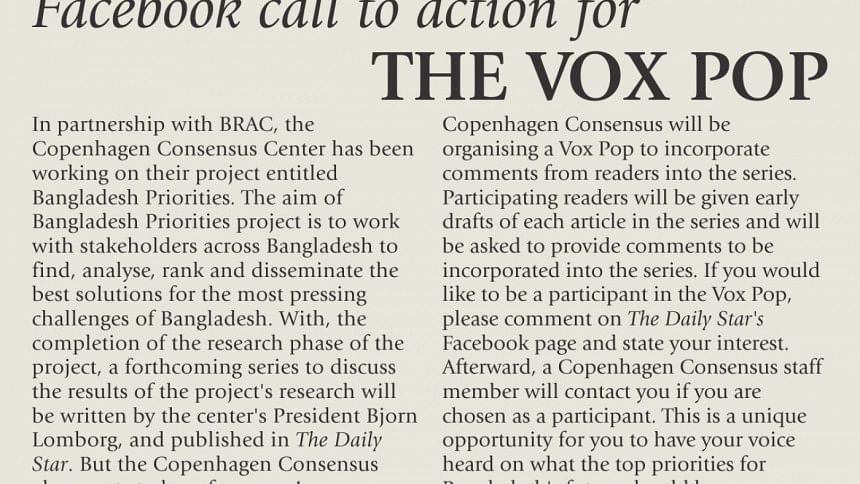
There's no shortage of solutions proposed to these difficult problems. We have talked to more than 400 experts from government, international development agencies, think-tanks, and academics and heard more than a thousand proposals. But which are best?
The Bangladesh Priorities Project, in partnership with BRAC, aims to answer which solutions will do the most good at the lowest cost. It's vital that each taka spent - whether by the government or international donors - is directed at the solutions that have the potential to do the most good. We want to get the most "bang for the buck," as the Americans say.
Our teams of Bangladeshi and international experts have been examining 78 strategies from 17 different topic areas to discover which solutions can yield the most benefits per taka spent. The research project can help us figure out not only which areas to prioritise, but also the most effective strategies to pursue within each area.
Our experts are using a tool that provides hard data to help prioritise how to spend limited resources: cost-benefit analysis. And their analyses don't include just economic benefits and costs—they're designed to take into account the social, health, and environmental effects as well.
By calculating the costs of each proposed solution, and also projecting the total benefits for each, we can judge the proposals in a more objective manner than if we simply picked them based on subjective criteria or emotions. We can also use the analyses to compare and contrast a broad range of topics, from concerns about education to air pollution to everything in between.
Given the stakes, this approach can have an incredible payoff. Take the standard policies that do some good. We have reason to believe that each taka spent typically does 7 takas of good. That is definitely respectable. But we can do much more good if we focus more precisely on the very best solutions. An earlier estimate, by more than 120 experts and several Nobel laureates, suggests that each taka spent could do 32 takas of good, instead of merely 7. For the more than Tk. 245 billion that aid agencies spend each year in Bangladesh, that would deliver an additional benefit of Tk. 6 trillion - practically half the country's GDP.
Likewise, imagine if we could help guide the national budget toward more cost-effective spending. The Tk. 2.2 trillion in annual government spending would hold the potential to increase social benefits by Tk. 55 trillion, each and every year.
"A nation without vision is a nation gone astray," the government's report on Vision 2021 says. Bangladesh Priorities will create a map of strategies and solutions that can help steer the country closer to its vision.
In our forthcoming series, which will be published here in The Daily Star, we'll address most of the detailed and path-breaking research that will help us all find the best solutions for Bangladesh. I invite you to participate on Facebook and in conversation. In May, once we have published all the research, we will all be ready to start the difficult but rewarding discussion about which ideas have the most promise to help Bangladeshis flourish, and at the least cost.
The writer is president of the Copenhagen Consensus Center, ranking the smartest solutions to the world's biggest problems by cost-benefit. He was ranked one of the world's 100 most influential people by Time Magazine.

 For all latest news, follow The Daily Star's Google News channel.
For all latest news, follow The Daily Star's Google News channel. 



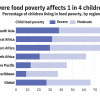
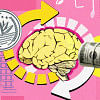


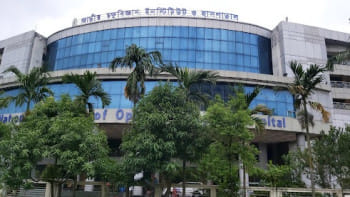
Comments